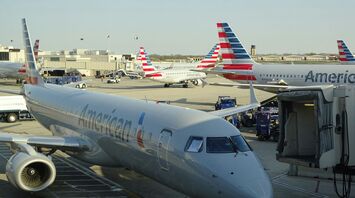Airline Bases vs. Hubs: Understanding the Key Differences

In the world of aviation, two terms often come up when discussing airline operations: base and hub. While they may seem interchangeable at first glance, these concepts play distinct roles in the way airlines structure their networks and manage their flights. For frequent travelers, understanding the difference between an airline base and a hub can help clarify why certain airports have more flights or better connectivity than others. This article explores the key distinctions between an airline base and a hub, shedding light on their respective functions and significance.
What Is an Airline Base?
An airline base refers to an airport where an airline stations a portion of its aircraft and crew. This means that the airline has a dedicated presence at that location, with aircraft that regularly operate flights from that airport, along with flight attendants and pilots who are based there. A base does not necessarily imply that the airport is a major hub for connecting flights. Instead, it’s often a place where an airline positions its crew and resources to operate short- or medium-haul routes.
For low-cost carriers (LCCs) such as Ryanair and EasyJet, bases are critical to their operational model. These airlines often set up multiple bases across different regions, enabling them to offer direct point-to-point flights rather than relying on a hub-and-spoke system. For example, Ryanair has numerous bases spread across Europe, allowing it to serve smaller airports while maintaining operational efficiency. At these bases, crew members begin and end their workdays, and aircraft are routinely serviced.
While bases may offer fewer routes compared to hubs, they are essential for ensuring that airlines can maintain frequent, direct services to a variety of destinations without the need for passengers to transfer through larger airports.
What Is an Airline Hub?
An airline hub, on the other hand, is a central airport through which the majority of an airline’s traffic flows. Hubs are crucial to the hub-and-spoke model used by major full-service carriers like American Airlines, British Airways, and Emirates. In this system, an airline routes passengers through a central hub, connecting them to various destinations within the airline’s network.
Hubs typically serve as the focal point of an airline’s operations, offering a high volume of connecting flights. For instance, American Airlines uses Dallas/Fort Worth International Airport (DFW) as one of its primary hubs, routing passengers through DFW to reach various domestic and international destinations. Similarly, Emirates has its primary hub in Dubai (DXB), from which it operates a vast network of long-haul flights.
The hub model allows airlines to consolidate their operations, improving connectivity by offering numerous flight options through a single location. For travelers, this can mean more choices for connections and a wider range of destinations, but it can also involve layovers and longer travel times, particularly for international flights.
Key Differences Between a Base and a Hub
While both bases and hubs play important roles in airline operations, there are several key differences between the two:
- Functionality: A base is mainly where an airline’s aircraft and crew are stationed, supporting point-to-point services. A hub, however, acts as a central node in an airline’s network, focusing on facilitating connections between various destinations.
- Scale of Operations: Hubs are typically larger and busier than bases, with significantly more flights and passenger traffic. Hubs are often the airline’s main center for international flights and long-haul routes, while bases are smaller and focus on regional or point-to-point flights.
- Passenger Experience: At a base, passengers are more likely to board direct flights to their final destination. At a hub, passengers are often routed through connecting flights, meaning layovers and transit times can be part of the travel experience.
- Location of Crew and Aircraft: Both hubs and bases house airline staff and aircraft, but hubs are generally the primary operating center for the airline, while bases are secondary locations where a smaller portion of the airline’s fleet and crew operate.
The Role of Hubs in Airline Networks
For legacy carriers and large international airlines, hubs are vital to their global networks. They allow airlines to offer more destinations without needing to operate direct flights to every city. By concentrating flights through hubs, airlines can fill larger aircraft with passengers from multiple origins, making long-haul routes more economically viable.
For example, Lufthansa uses Frankfurt Airport (FRA) as its main hub, enabling the airline to connect passengers from all over Europe to destinations across North and South America, Asia, and Africa. This model allows for more efficient use of aircraft and crew, while providing passengers with the ability to reach a greater number of destinations through a single transfer point.
The Role of Bases in Low-Cost Carrier Models
In contrast, low-cost carriers focus more on point-to-point flights from their bases, avoiding the complexity and costs associated with operating large hubs. Bases are key to this strategy, allowing LCCs to operate frequent direct services between smaller or regional airports. This keeps costs lower for both the airline and passengers, as it reduces the need for connecting flights and simplifies operations.
Wizz Air, for instance, has established multiple bases across Europe, allowing the airline to connect less-traveled cities with direct flights, while still maintaining a competitive pricing model. These bases enable airlines to expand their reach without the heavy infrastructure investment required for a major hub.
Hybrid Models: When Hubs and Bases Coexist
Some airlines operate a hybrid model, combining elements of both hubs and bases. For example, British Airways uses London Heathrow (LHR) as its primary hub for international and long-haul flights, while also maintaining bases at other UK airports like London Gatwick (LGW) and Manchester (MAN). This allows British Airways to balance its global connectivity with regional services, maximizing efficiency and customer reach.



















